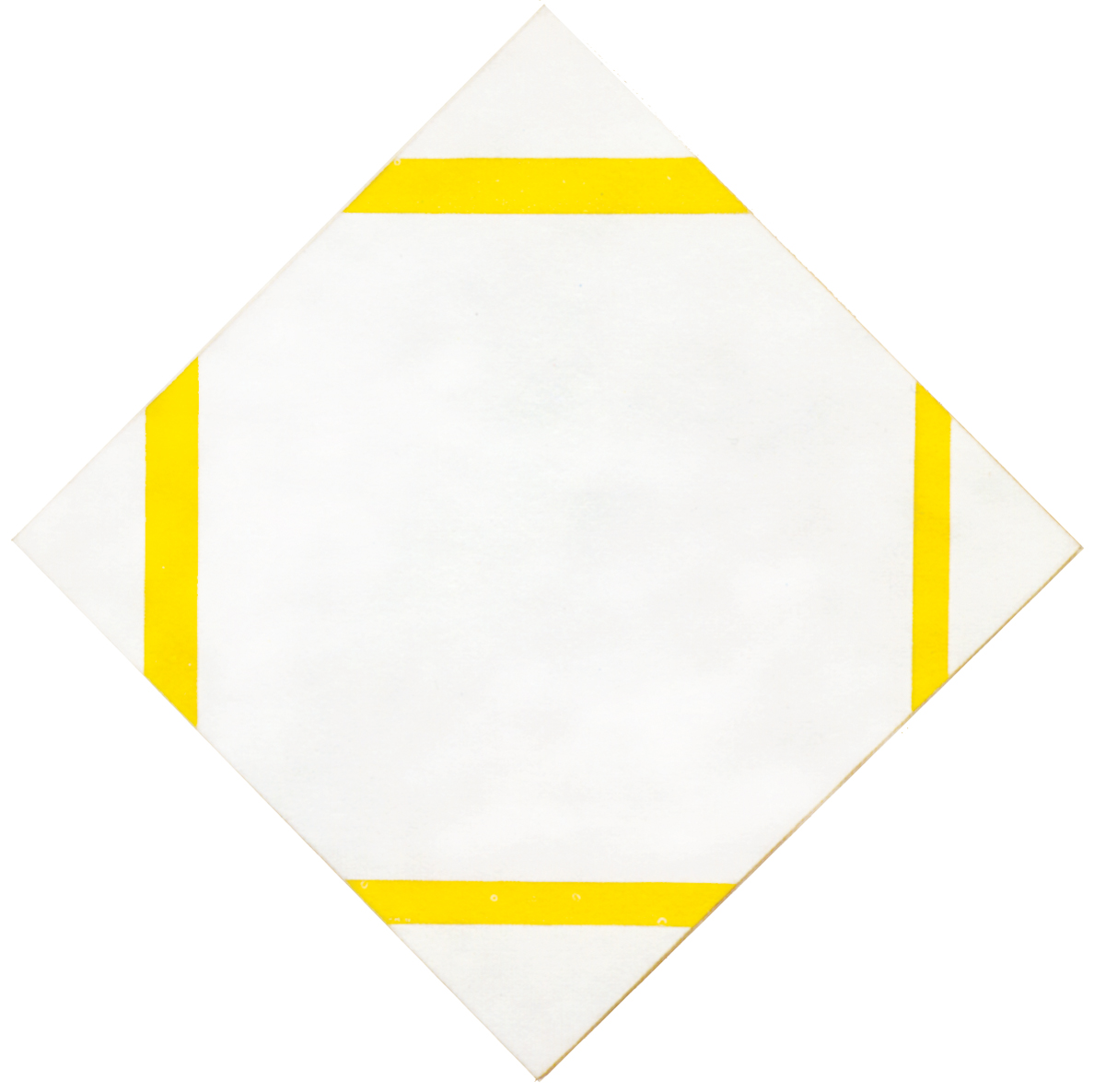In Broadway Boogie Woogie we see a multitude of small gray, yellow, red, and blue fragments randomly moving along the lines..
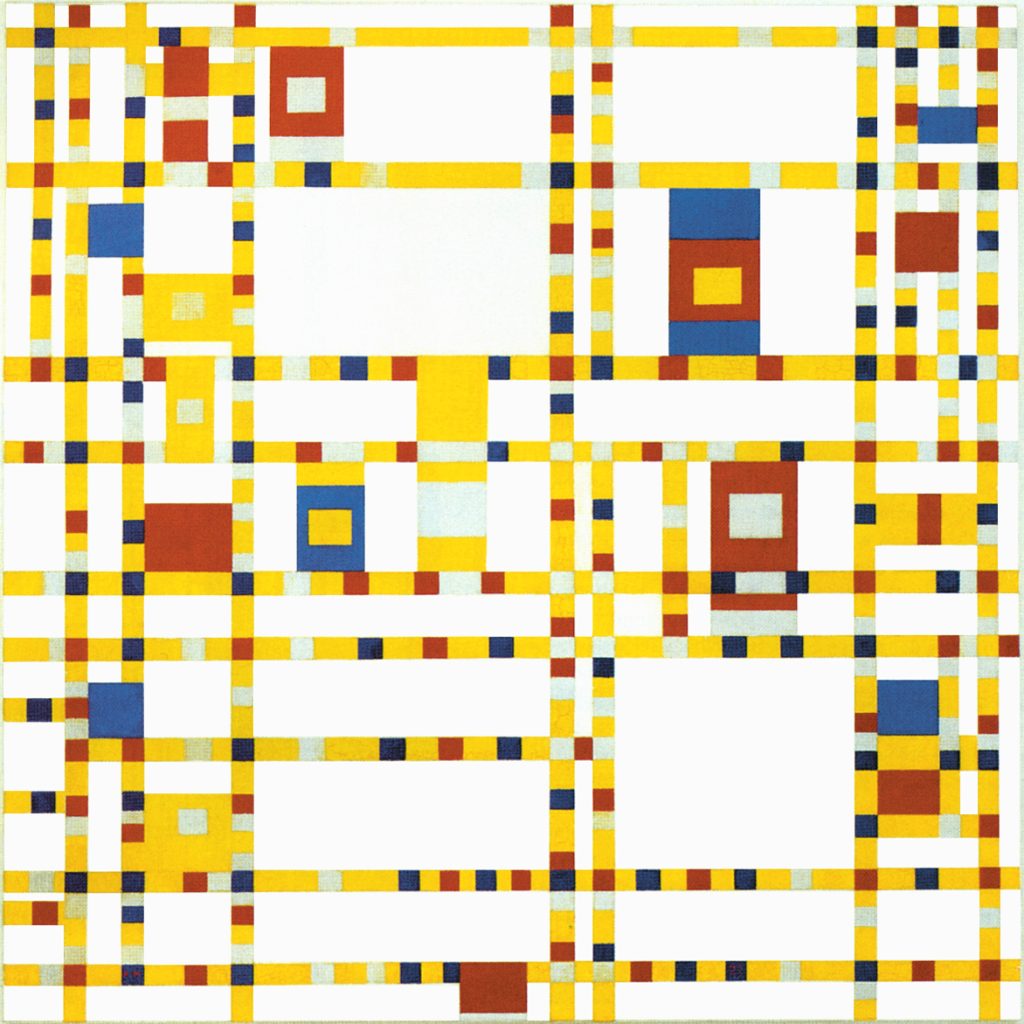
Oil on Canvas, cm. 127 x 127
..which join up with others to generate some symmetrical configurations (Diagram A)
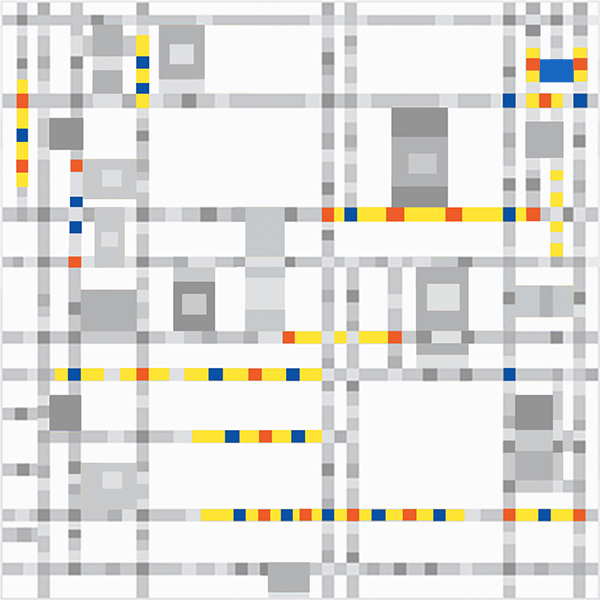
symmetrical configurations that give then birth to planes (Diagram B) where the relationship between horizontal and vertical appears more stable and durable than in the initial fragments moving along the lines.
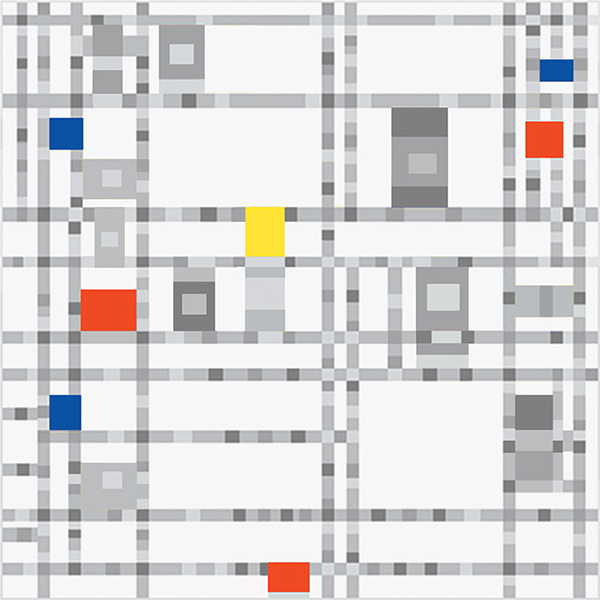
New planes are born, as shown by diagram C, that differ from those observed in diagram B by presenting an inner space marked with a different color:
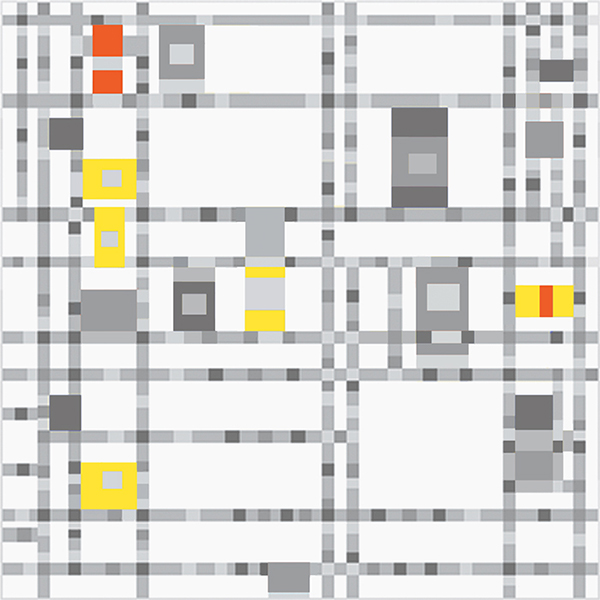
Diagram D shows how the self-internalization of space continues and the three primary colors concentrate in the area of just two planes while to the right one plane finally unites yellow, red and blue:
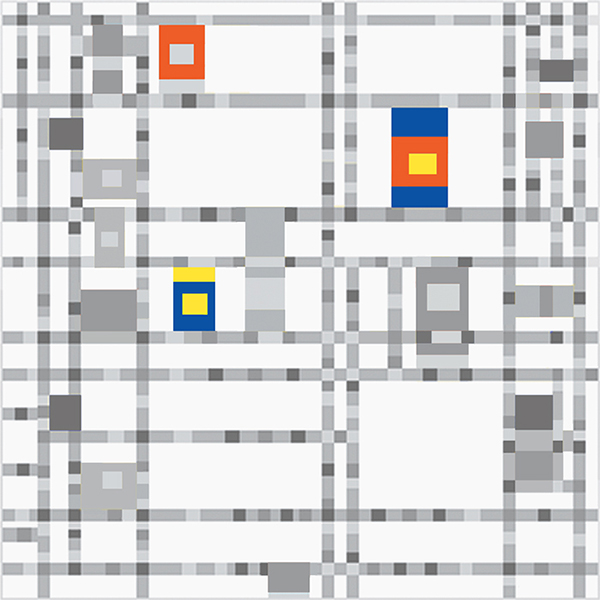
The manifold space made of yellow, red and blue fragments expanding on lines toward opposite directions which disrupted our visual field at the beginning of the process by keeping the eye in constant motion, attain now a unitary synthesis (Diagram E):
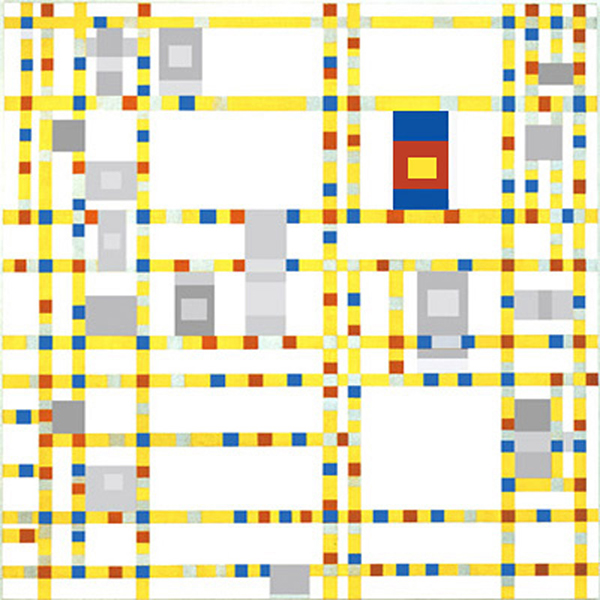
An external contradictory space (the opposite lines) is united into an inner space. Color yellow, which defines the lines is in fact the one which most interiorize within the unitary plane.
Recapitulating what we have seen so far: A multitude of small gray, yellow, red, and blue fragments become monochromatic planes which transform into two-colored planes that then become a single plane constituting a synthesis of the three primary colors. Space undergoes uninterrupted transformation from a condition of multiplicity to one of unity, from the many to the one. From what Mondrian called the natural to the spiritual.

The controversial and virtually infinite space of the lines is transformed into a finite and lasting space with the unitary plane. It would, however, be a mistake to see this as calm in the sense of a total absence of inner tension. The unitary plane should rather be seen as a temporary synthesis which reopens to the manifold space around as we shall see in diagram F:
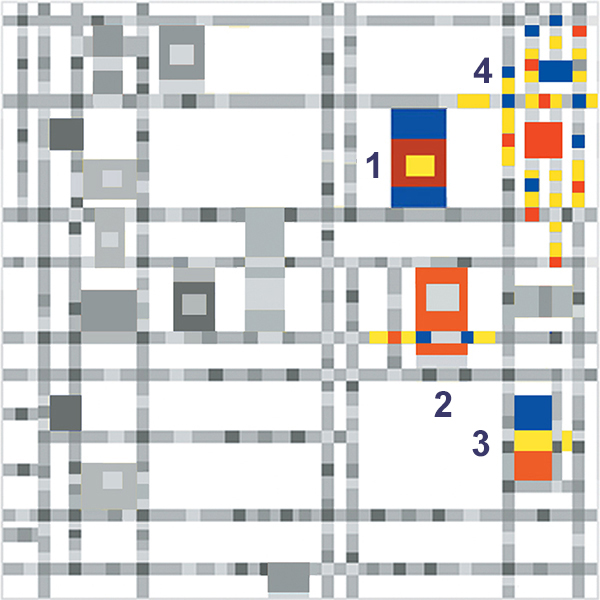
Plane 2 is the same size as plane 1 but consists solely of red and gray rather than the three primary colors. Moreover the horizontal line running suddenly through the vertical plane tends visually to disrupt the previously attained balanced interpenetration of horizontal and vertical (1).
After the equivalence of the opposite directions and the synthesis of three primary colors attained in plane 1, the colors are again reduced in plane 2 and the external dynamism of the lines reappears to generate new opposition. After the degree of comparative calm, constancy, and unity achieved in plane 1, spatial movement thus seems to reappear in plane 2. Unity opens up to external space and the colors are separated and flow back toward the more dynamic and variable space of the lines (3 and 4).
The indication provided by plane 2 finds further confirmation in plane 3, where blue, yellow, and red are juxtaposed but no longer interpenetrate as they did in plane 1. The juxtaposition produces the impression of three separate planes, whereas the interpenetration combines the three colors in a single structure of greater stability. Note how the yellow on the right of plane 3 already seeks to cross the perimeter of the plane and flow into the yellow of the surrounding lines. Plane 3 can therefore be seen as plane 1 in the process of dissolution.

Configuration 4 possibly represents the conclusion of the process of reopening the unitary synthesis in that it can be seen as a continuation of the disintegration of plane 3. Space proceeds from a comparatively static and wholly internal condition (1) toward one of growing instability (2) that is gradually transformed into the more dynamic and variable external space of the lines (3 and 4).
From expansion toward increasing concentration (yellow, red and blue fragments dispersed along the opposite lines gradually transform into a synthesis) and then from concentration back to expansion: this is the way Broadway Boogie Woogie breathes. Through a dynamic process the one and the many (the spiritual and the natural) merge and transform into each other.
Copyright 1989 – 2024 Michael (Michele) Sciam All Rights Reserved More
